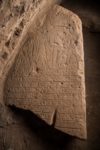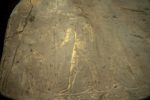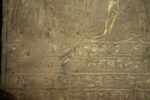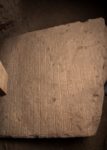 The team of archaeologists currently working to lower the high groundwater level at the Kom Ombo Temple in Aswan found two ancient sandstone stele this Sunday, one depicting King Seti I (r. 1290–1279 B.C.), second pharaoh of the 19th Dynasty. The other has far more recent iconography. Its subject is King Ptolemy IV Philopator (r. 221-204 BC), the fourth pharaoh of the Ptolemaic Dynasty.
The team of archaeologists currently working to lower the high groundwater level at the Kom Ombo Temple in Aswan found two ancient sandstone stele this Sunday, one depicting King Seti I (r. 1290–1279 B.C.), second pharaoh of the 19th Dynasty. The other has far more recent iconography. Its subject is King Ptolemy IV Philopator (r. 221-204 BC), the fourth pharaoh of the Ptolemaic Dynasty.
 The Seti stele is 7.5 feet high, 3.3 feet wide and one foot thick. It was found broken into two pieces. The inscriptions are in good condition despite the damage. The Ptolemy stele was found broken in several pieces. Antiquities Ministry conservators were able to put the broken sections back together revealing an impressively large relief 10.7 feet high, 3.8 feet wide and one foot thick.
The Seti stele is 7.5 feet high, 3.3 feet wide and one foot thick. It was found broken into two pieces. The inscriptions are in good condition despite the damage. The Ptolemy stele was found broken in several pieces. Antiquities Ministry conservators were able to put the broken sections back together revealing an impressively large relief 10.7 feet high, 3.8 feet wide and one foot thick.
 Seti I is depicted standing in front of Horus, the falcon-headed god of divine kingship, and the crocodile god Sobek. Above them is a winged sun, the protective symbol of the solar deity Ra. Beneath the figures is a 26-line hieroglyphic inscription. The cartouche of King Horemheb, the last pharaoh of the 18th Dynasty who reigned approximately from 1319 B.C. to 1292 B.C., appears in the inscription multiple times.
Seti I is depicted standing in front of Horus, the falcon-headed god of divine kingship, and the crocodile god Sobek. Above them is a winged sun, the protective symbol of the solar deity Ra. Beneath the figures is a 26-line hieroglyphic inscription. The cartouche of King Horemheb, the last pharaoh of the 18th Dynasty who reigned approximately from 1319 B.C. to 1292 B.C., appears in the inscription multiple times.
 The second stele depicts Ptolemy IV in the form of Horus standing with a sekhem scepter in his hand. Ptolemy’s wife Arsinoe III is standing behind him. The backdrop is the divine triad of the temple (the merged deity Sobek-Horus and his parents Isis and Osiris). Above them too is the winged sun. The hieroglyphic inscription below them is 28 lines long.
The second stele depicts Ptolemy IV in the form of Horus standing with a sekhem scepter in his hand. Ptolemy’s wife Arsinoe III is standing behind him. The backdrop is the divine triad of the temple (the merged deity Sobek-Horus and his parents Isis and Osiris). Above them too is the winged sun. The hieroglyphic inscription below them is 28 lines long.
The Temple of Kom Ombo was built by Ptolemy IV as a double temple dedicated to the worship of Horus and Sobek. There was a previous temple to Sobek on the site built by 18th Dynasty pharaoh Thutmose III (1479–1425 B.C.), but it was largely gone by the time Ptolemy embarked on his ambitious double-temple project. Last Ptolemies enlarged and built on to the Temple of Kom Ombo. Today only a sandstone doorway in a brick wall remain from the original temple. It is integrated into the Ptolemaic temple.
The Ministry of Antiquities has not commented on whether the Seti relief comes from the older temple and was redeployed by the Ptolemies in the new temple, but that seems the likeliest scenario to me. It’s possible that it could have been freshly by the carved Macedonian pharaohs as a tribute to the ancient deified king, I suppose, but then Ptolemy’s name would be all over it, not Horemheb’s.